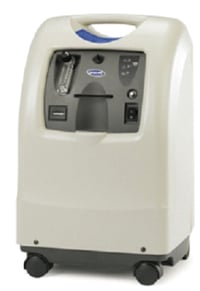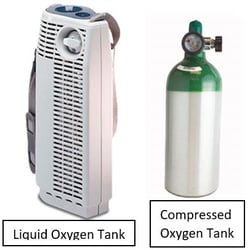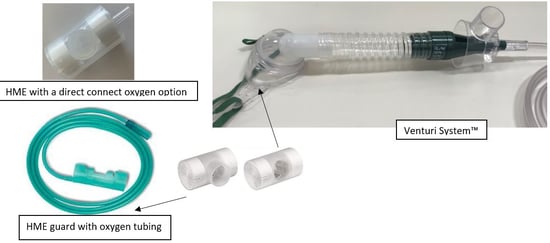What is an oxygen system?
Oxygen (O2)
Purpose
The oxygen system allows your child to get the prescribed amount of oxygen, by using a set number called a liter flow.
Guidelines
Your oxygen system will consist of both a stationary system, and a portable one. Your home care provider will instruct you on how to use these.
- Use the oxygen system at all times, as ordered by your child’s physician.
- Check the amount of oxygen in the portable tank before using it.
- Your home healthcare provider will help you figure out how much flow to use as ordered by your child’s physician.
Special directions

- Keep the oxygen supply at least 5 feet from any heat source like a radiator or fireplace.
- Do not smoke with oxygen in use.
- Do not use electrical devices, including electric toys, blankets, etc. near the oxygen because they may cause sparks.
- Do not use petroleum or acetone based products on your child such as Vaseline™ or nail polish remover, as these items are flammable.
- Follow all directions provided by the home care provider.
Stationary oxygen systems
- An oxygen concentrator is the machine that will deliver oxygen while you are in your home.
- This machine is not portable, it has to be plugged into a wall outlet.
- This machine pulls in air from the room it is in, and concentrates the oxygen from that air to deliver to the child.
- An oxygen tubing will be used to connect this machine to the ventilator at the oxygen adapter on the ventilator. Do not add into the ventilator tubing.
- An oxygen tubing will be used to connect this machine to your stationary humidification system, and will be added into the tubing.
Portable oxygen systems
- Oxygen tanks are used for portability. They come in two forms: Liquid and Compressed.
- Your home healthcare provider will work with you to decide which size tanks will work best for you.
- Portable liquid oxygen tanks should always be kept upright and should not transported in the trunk of a car.
- If liquid oxygen is in very hot or cold temperatures, this could cause oxygen to leave the tank fast.
- The portable compressed oxygen tanks may be transported in the trunk of a car and may lay flat.
- When your child is using the HME (Heat & Moisture Exchanger, or artificial nose) continue to use oxygen.
- Your home healthcare provider may offer you different options to add in oxygen.
- Use the percentage of oxygen closest to or above the percentage ordered, never below.
Note: Refer to HME teaching sheet #3034 for more information on HME use. Refer to your specific Humidification System teaching sheet for more information on tubing set up.





